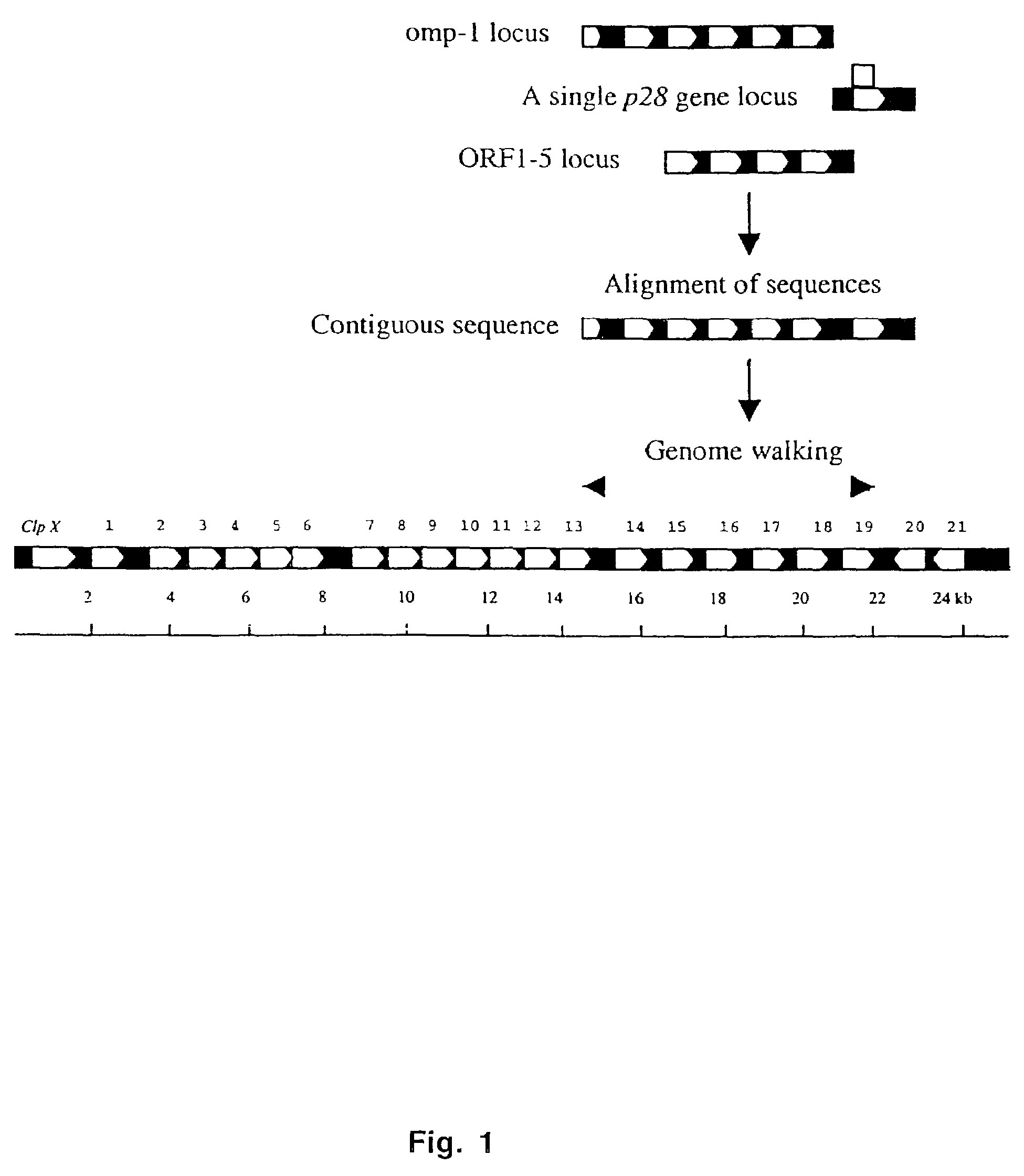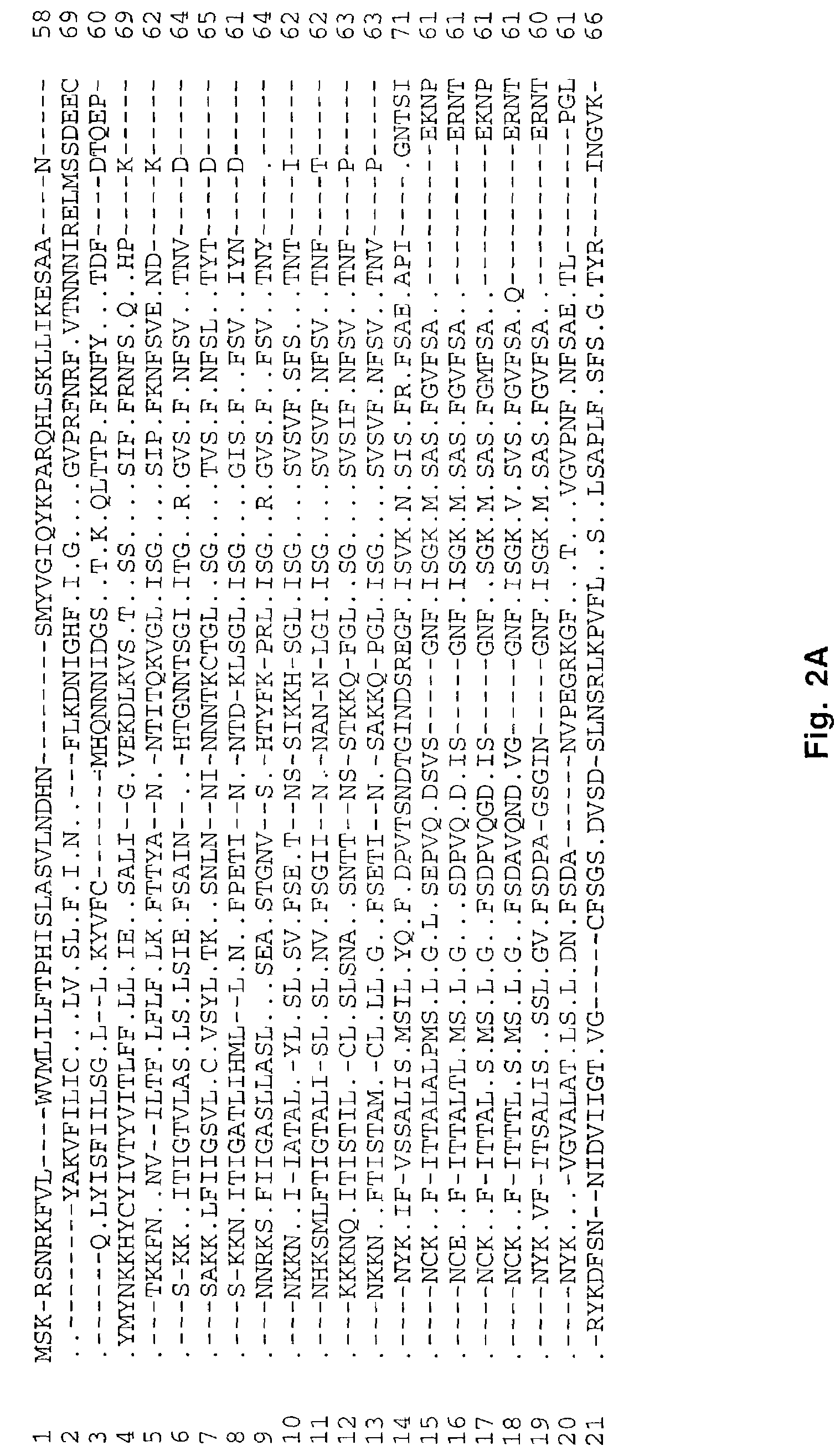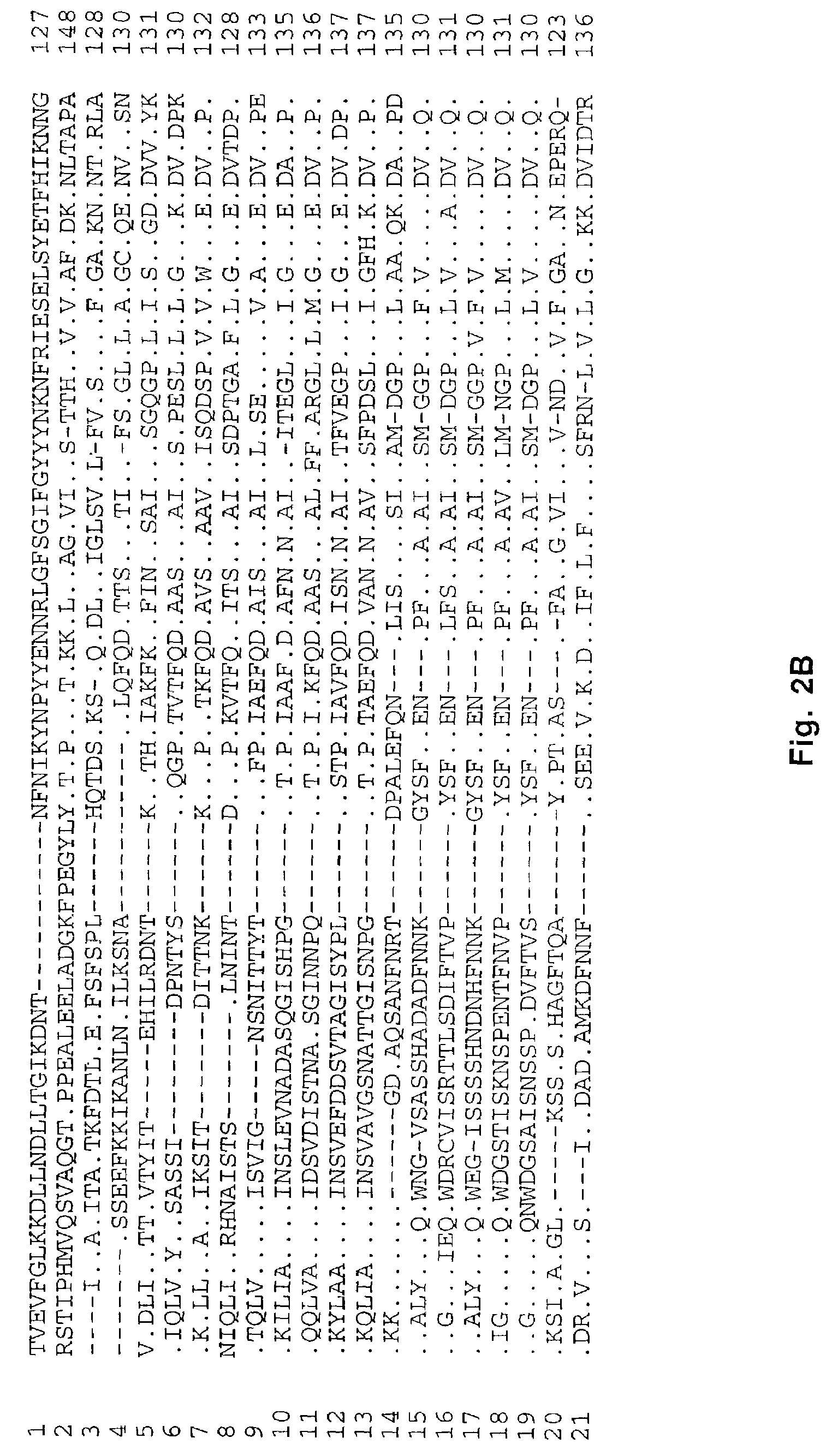Ehrlichia chaffeensis 28 kDa outer membrane protein multigene family
a technology of outer membrane protein and ehrlichia chaffeensis, which is applied in the field of molecular cloning and characterization of ehrlichia chaffeensis 28 kda outer membrane protein multigene family, can solve the problems of lack of knowledge of many of the sequences in the prior art, and achieve the effect of easy sequen
- Summary
- Abstract
- Description
- Claims
- Application Information
AI Technical Summary
Problems solved by technology
Method used
Image
Examples
example 1
Ehrlichia spp
[0062]Ehrlichia chaffeensis (Arkansas strain) was obtained from Jacqueline Dawson (Centers for Disease Control and Prevention, Atlanta, Ga.). Ehrlichiae were cultivated in DH82 cells, a canine macrophage-like cell line. DH82 cells were harvested with a cell scraper when 100% of cells were infected with ehrlichiae. The cells were centrifuged at 17,400×g for 20 min. The pellets were disrupted twice with a Braun-Sonic 2000 sonicator at 40 W for 30 sec on ice. Ehrlichia were then purified by using 30% Percoll gradient centrifugation (Weiss et al, 1989).
example 2
PCR Amplification of the p28 Multigene Locus
[0063]Ehrlichia chaffeensis genomic DNA was prepared by using an IsoQuick Nucleic Acid Extraction Kit (ORCA Research Inc., Bothell, Wash.) according to the instructions of the manufacturer. The unknown sequences of the p28 multigene locus were amplified by PCR using the Universal GenomeWalker Kit (Clontech Laboratories, Inc., Palo Alto, Calif.). Briefly, the E. chaffeensis genomic DNA was digested respectively with Dra I, EcoR V, Pvu II, Sca I, and Stu I. The enzymes were chosen because they generated blunt ended DNA fragments to ligate with the blunt-end of the adapter. The digested E. chaffeensis genomic DNA fragments were ligated with a GenomeWalker Adapter, which had one blunt end and one end with 5′ overhang. The ligation mixture of the adapter and E. chaffeensis genomic DNA fragments was used as template for PCR. Initially, the p28 gene-specific primer amplified the known DNA sequence and extended into the unknown adjacent genomic DN...
example 3
[0064]The PCR products were purified by using a QIAquick PCR Purification Kit (QIAGEN Inc., Santa Clarita, Calif.) and were sequenced directly using PCRprimers when a single clear band was observed on the ethidium-bromide stained agarose gel. If multiple bands appeared, the DNA band of interest was excised from the gel, and the DNA was extracted from the gel using the Gel Extraction Kit (QIAGEN Inc., Santa Clarita, Calif.). The gel-purified DNA was cloned into the Topo TA cloning vector (Invitrogen, Inc., Carlsbad, Calif.) according to the instructions of the manufacturer. A High Pure Plasmid Isolation Kit (Boehringer Mannheim Corp., Indianapolis, Ind.) was used to purify the plasmids. An ABI Prism 377 DNA Sequencer (Perkin-Elmer Applied Biosystems, Foster City, Calif.) was used to sequence the DNA in the Protein Chemistry Laboratory of the University of Texas Medical Branch.
PUM
 Login to View More
Login to View More Abstract
Description
Claims
Application Information
 Login to View More
Login to View More - R&D
- Intellectual Property
- Life Sciences
- Materials
- Tech Scout
- Unparalleled Data Quality
- Higher Quality Content
- 60% Fewer Hallucinations
Browse by: Latest US Patents, China's latest patents, Technical Efficacy Thesaurus, Application Domain, Technology Topic, Popular Technical Reports.
© 2025 PatSnap. All rights reserved.Legal|Privacy policy|Modern Slavery Act Transparency Statement|Sitemap|About US| Contact US: help@patsnap.com



